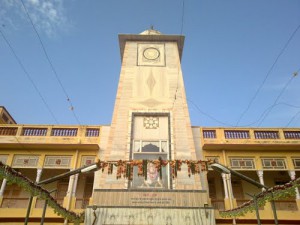Tourist Trraction of Jhunjhunu
Jhunjhunu, is the cultural capital of the region known as Shekhawati and has a rich history, as it played a significant role in the politics of Shekhawati. If local legends are to be relied upon, the history of this place dates back to the Pandavas who, while wandering, had spent some time here. This region has been called the' largest open art gallery in the world'.
Jhunjhunu is the districthead quarters and ancient capital of Shekhawati, could be the most attractive places for the tourist. It has some of the most beautiful buildings, not to be missed by its visitors. Places to visit in the city are Dargah of Kamaruddin Shah, Badalgarh Fort, Mukundgarh Fort, The Modi and Tiberwala Haveli etc.
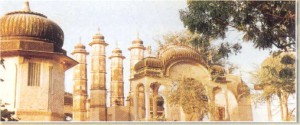
The Birdi Chand Well is situated in the north-western part of the town. It is surrounded by four minarets. It is believed that baoris or step wells are considered to be equivalent to temples and is evident from the fact that a temple dedicated to Lord Hanuman is situated near the well.
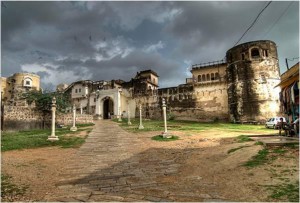
The Mukundgarh Fort is a heritage property of the Shekhawatis and dates back to some 300 years. Presently, it has been converted into a resort that provides all sorts of modern amenities.
Besides grand construction, the fort is known for the Shekhawati wall frescoes. The other good examples of fresco paintings are in the haveli or palaces of Ganeriwal, Kanoria and Saraf. The fort provides view of the courtyard and of the surrounding green vegetation.
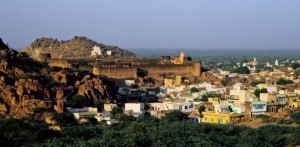
The Badalgarh Fort was built by Nawab Fazl Khan, towards the end of the 17th century. Though it is considered one of the popular forts of Shekhawati, it was basically built as a stable to protect the camels and horses. Therefore, this palace lacks the ‘sheesh mahals’ or mirror palaces and ‘baradaris’ or pavilions that is usually found in other palaces.
Apart from providing views of the surrounding areas, the fort has three tombs or ‘makbaras’ of the Kaimkhani nawabs. The tomb of Nawab Samas Khan is situated to the east of the town and the tomb of Bhawan Khan that was built by Rohella Khan is situated to the west of the town. The Rohella Khan’s tomb is like a solid block that is topped by a dome.

Bihari Ji temple is dedicated to Bihariji and is visited by many devotees everyday. The temple is mainly known for its antique paintings and murals.
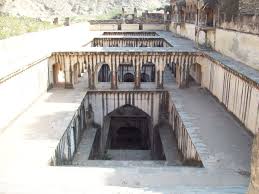
The oldest step well of Jhunjhunu is the Mertaniji ki Baori that was built in 1783, by Sardul Singh’s widow as an act of generosity. The structure is considered an architectural feat and has flights of steps descending through arches.
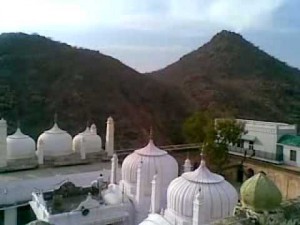
The dargah or shrine of Kamruddin Shah is a complex located at the foot of the hill, known as Kana Pahar. This dargah is the tomb of the Muslim saint, Kamruddin and was built in the mid 19th century. It consists of a mosque, madrassa or Koran school, mehfilkhana or concert hall and a ramp that leads to the imposing gateway. Around the courtyard, some traces of murals of floral motifs are still visible. Within the complex, a little pyramid like structure was erected for the infant son of Major Forster, who died in 1841.

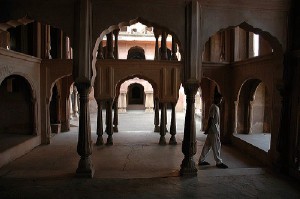
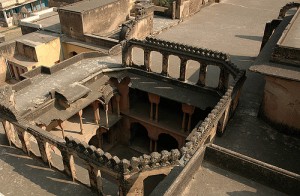
Khetri Mahal
The Khetri Mahal, also called the Wind Palace was built in the year 1770 and is known for its architectural heritage. This palace was built by Bhopal Singh, the grandson of Sardul Singh and the founder of Khetri.
The palace consists of marble pillars instead of walls, thereby facilitating the maximum flow of air through the building. From the entrance, a ramp is ascended through the palace, which was used by the Rajputs to ride up their horses. The palace comprises of large halls with pillars and arches. This palace inspired Sawai Pratap Singh of Jaipur, who built the Hawa Mahal in 1799.

The Zorawargarh is a fort built by Zorawar Singh, the eldest son of Sardul Singh, in the year 1741. The fort consists of numerous buildings and the Zenana complex. Though most part of the fort is in ruins, the better buildings are used for housing the town jail and government offices.


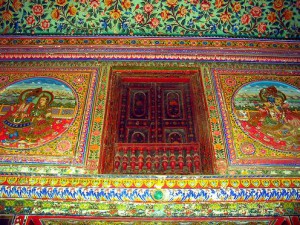
The Modi and Tiberwala Haveli
Tourists can visit both the Modi and Tiberwala Haveli situated in the main bazaar of Jhunjhunu. The Haveli display the age old architecture and has a large number of murals.
Rani Sati Temple
The Rani Sati Temple is dedicated to Shri Rani Satiji, as a mark of respect to motherhood and feminine bravery. This temple is visited by numerous followers and worshippers everyday to offer their pujas and prayers. A sacred ritual is held on the occasion of ‘Bhado Amavasya’ or no moon day. The Pardhan Mand with the imposing Shikhar also houses a portrait of Rani Satiji. The main temple is the sanctum sanctorum and the whole edifice is in white marble. The temple also has some interesting murals and colourful wall paintings.
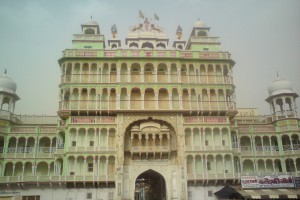
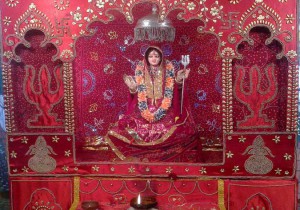
Ganeriwal Haveli
Ganeriwal Haveli is situated in Mukundgarh at a distance of 28 km from Jhunjhunu. This beautiful Marwari mansion was built in the 19th century and is known for its opulently decorated frescoes painted on the walls.Other than the paintings that portray the stories from the mythological epics like Mahabharatha and Bhagavath Gita, including the life of Lord Krishna, this haveli is also famous for the intricately carved facade on the exterior. Some of the murals represent the stories of the valiant local legends. Like most havelis in the Shekhawati region, the Ganeriwal Haveli opens with a massive carved wooden gate that leads into many smaller courtyards that further lead to the many rooms around.The frescoes in the Ganeriwal Haveli, like those in the many other havelis in the Shekhawati region, are not in a good condition. Measures are taken to restore these heritage treasures.To continue with your expedition of fresco-spotting, one could also visit the Jhunjhunwala Haveli situated nearby, or could visit the Fort of Mukundgarh, now converted into a heritage hotel.
Situated on the SH 8, Ganeriwal Haveli is easily reachable by road

